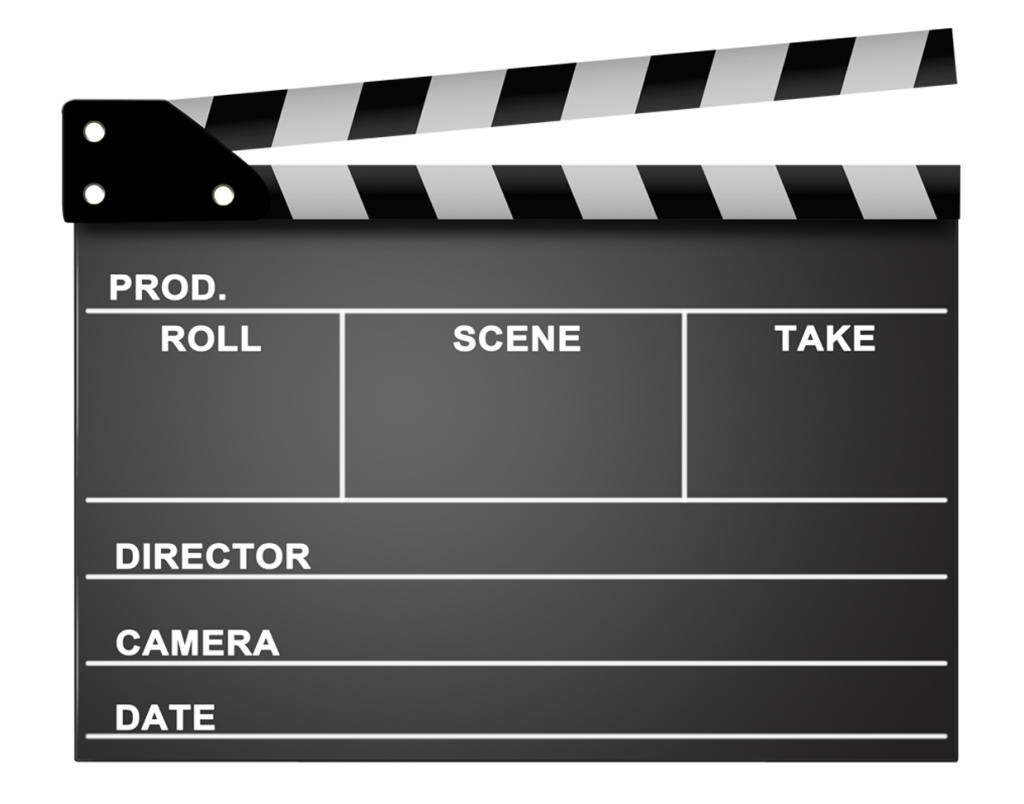
This image has format transparent PNG with resolution 1024x804.
You can download this image in best resolution from this page and use it for design and web design.
Clapperboard PNG with transparent background you can download for free, just click on download button.
A clapperboard, also known as a dumb slate, clapboard, film clapper, film slate, movie slate, or production slate, is a device used in filmmaking, television production and video production to assist in synchronizing of picture and sound, and to designate and mark the various scenes and takes as they are filmed and audio-recorded. It is operated by the clapper loader. It is said to have been invented by Australian filmmaker F. W. Thring. Due to its ubiquity on film sets, the clapperboard is frequently featured in behind-the-scenes footage and films about filmmaking, and has become an enduring symbol of the film industry as a whole.
The clapperboard combines a chalkboard slate or acrylic board with a set of clapper sticks across the top; one stick is fixed to the upper edge of the slate, while the other is attached to it by a hinge at one end. The slate displays the name of the production, the scene and "take" about to be performed, and similar information;[6] a camera assistant holds the clapperboard so the slate is in view of the cameras with the clapper sticks already open, speaks out information for the benefit of the audio recording, then snaps the sticks shut.
The shutting of the clapper sticks is easily identified on the visual track, and the sharp "clap" noise is easily identified on the separate audio track. The two tracks can later be precisely synchronized by matching the sound and movement. Since each take is expressly identified on both the visual and audio tracks, segments of film are easily matched with corresponding segments of audio.
Finding a way to synchronize visual and audio tracks was essential to traditional filmmaking because film stock reacts to light, not sound. During a film shoot, the audio track was always recorded by the audio engineer with a separate system on separate media (so-called double-system recording). (For early sound films, playback of the audio track was synchronized during post-production with sound-on-disc techniques; engineers later figured out how to directly add an audio track to a release print with sound-on-film techniques.) Failure to use clapperboards can prevent the film editor from synchronizing the visual images on film footage with the accompanying audio recordings, as actually happened with the long-delayed film Amazing Grace.
Methods were later developed to directly record sound to film as part of a single system integrated with the film camera (so-called single-system recording), which was most commonly used with small formats like Super 8 film. However, single-system recording did not render clapperboards obsolete. First, single-system recording of sound-on-film is "decidedly inferior in audio quality" to traditional double-system recording. Second, footage from single-system recording is difficult to shoot and edit. Since the sound playback head cannot block the projector gate and must be placed after the gate, the soundtrack must be offset by several frames (usually 28, 26, or 18 ahead) to maintain sync with the frame in the gate. With such footage, cutting to the next shot when an actor's lips stop moving will risk cutting off their last syllable, unless the soundtrack is copied and edited on a separate system, and actors must be directed to pause to allow for such cuts. Because of these technical limitations, the film industry has continued to use double-system recording for professional-quality film projects.
In this page you can download free PNG images: Clapperboard PNG images free download